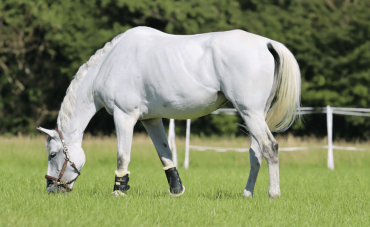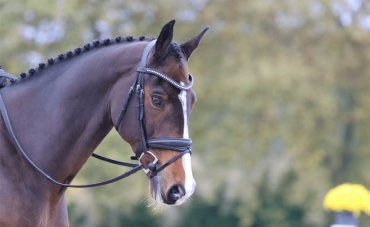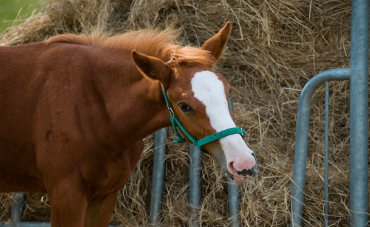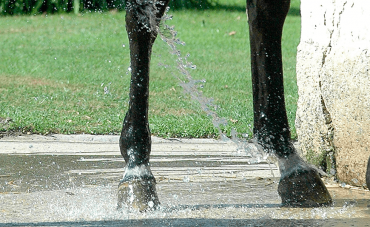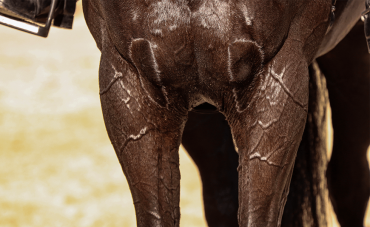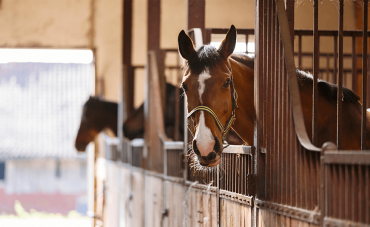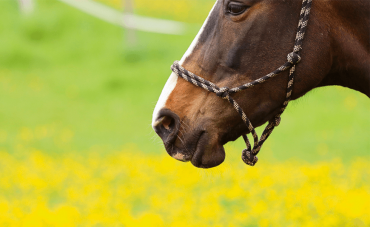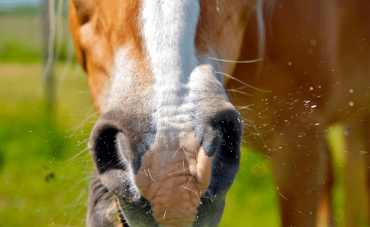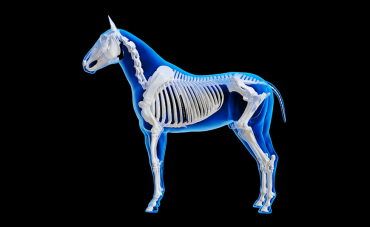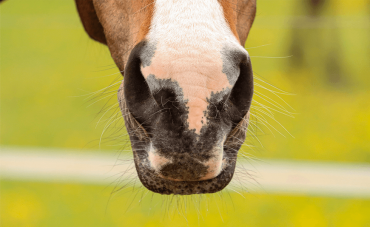What are windgalls?
Windgalls fall within the category of soft swellings and are indicative of an abnormal expansion of the synovial pouches within the fetlock joints or tendons. They result from an excessive production of synovial fluid triggered by inflammation.
Windgalls should not be confused with bursitis, which denotes inflammation of the bursa—a "pocket" of fat designed to shield joints and/or tendons. These pockets are present in various areas, such as the hock or the tip of the elbow, and their nomenclature may differ according to their location (e.g. calcaneal, navicular, carpal hygroma, and so forth).
Types of Windgalls
Two distinct types of windgalls exist: articular windgalls and tendinous windgalls.
Articular Windgalls
Articular windgalls are linked to inflammation within a fetlock joint. As outlined in our article on joints, these joints are enclosed by the synovial membrane, which generates synovial fluid. This fluid's primary role is to lubricate the joint, facilitating the movement of bones within the joint.
In cases of inflammation, excessive synovial fluid production leads to distension of the synovial membrane and the resultant appearance of windgalls on the limb. Windgalls essentially manifest the visible consequence of the joint capsule membrane's expansion. Should windgalls persist, the joint capsule may harden (fibrosis), causing pain and even lameness.
Tendinous Windgalls
Tendinous windgalls are associated with inflammation of the synovial sheath, which envelops the tendons, safeguarding them from friction against bones and ensuring proper movement. Similar to the joint cavity, the synovial sheath contains synovial fluid.
Inflammation causes excess synovial fluid production, resulting in swelling of the tendon sheath and the appearance of tendinous windgalls.
Distinguishing Between the Different Types of Windgalls
Distinguishing between articular and tendinous windgalls can be aided by understanding your horse's anatomy, as well as the positioning of joints and tendons. Nevertheless, specific characteristics can assist in differentiation:
- Tendinous windgalls often assume a more elongated shape (along the tendon) and are softer compared to articular windgalls. They tend to be located on the sides of the fetlock, particularly towards the rear.
- Articular windgalls tend to be harder and possess a more rounded appearance. They are usually the most painful and are found just behind the cannon bone of the fetlock.
In certain instances, windgalls may involve both the joint and the tendon, making it challenging to distinguish between the two. If you suspect your horse has windgalls, do not hesitate to consult your vet.
Causes
As previously mentioned, windgalls stem from inflammation in the joint and/or tendon. To comprehend what precipitates the emergence of windgalls, it is crucial to identify the cause(s) of the inflammation. Common causes include:
- Intense work or pressure on joints and tendons.
- Working on unsuitable terrain—excessively hard ground exerts undue pressure on joints, potentially leading to articular windgalls, whereas overly soft or deep terrain can apply excessive pressure on tendons.
- Poor hoof conditions and inappropriate shoeing can result in compensatory changes in joints and tendons, potentially leading to windgalls.
- Improper equipment, such as tightly applied bandages, can cause overpressure, fostering the development of windgalls.
- Trauma.
- Infection.
- Joint pathologies like synovitis or osteoarthritis are almost invariably the causes of articular windgalls. Similarly, osteochondrosis can trigger windgalls. Tendinous windgalls are predominantly caused by tendinitis.
- A nutritional imbalance, such as an excessively rich diet or deficiencies in minerals and vitamins, can provoke inflammation and, consequently, the formation of windgalls.
Diagnosis
Although diagnosing windgalls may appear straightforward at times, it is imperative to seek your vet's expertise to ensure an accurate diagnosis. Your vet will initiate a local examination and may refine the diagnosis through ultrasound and/or X-rays, if necessary. Additionally, they will investigate the origin of the windgall. Following diagnosis, your vet will provide a tailored treatment plan for your horse and offer preventive measures to mitigate windgall formation.
Treatment
Early management of windgalls plays a pivotal role in successful recovery. If the swelling is not painful or does not cause lameness, medical intervention may not be required. Local treatments, such as applying astringent and absorbent products during showers (e.g., clays), as well as massaging the horse's limbs with a suitable gel to enhance circulation, can suffice.
For windgalls associated with pathologies or leading to gait abnormalities, comprehensive treatment is essential. Your vet will examine the underlying causes of the windgalls and make a thorough diagnosis. They may recommend treatments tailored to the specific pathology, such as anti-inflammatories or bisphosphonates. More information on osteoarthritis, tendonitis, or osteochondrosis can be found in our health articles.
Finally, the use of feed supplements can also be of interest in the management of windgalls. The type of supplements can be adapted to the type of windgall:
- To support articular windgalls, chondroprotective supplements such as Ekyflex Arthro Evo will help protect the joint and provide overall locomotor comfort for the horse.
- If windgalls cause stiffness, supplements such as Ekyflex Nodolox or Harpagyl will help to limit stiffness.
- To support tendinous windgalls, the priority is to protect the tendon. A supplement such as Ekyflex Tendon EVO will help protect the tendon by allowing it to maintain elasticity and flexibility while providing the sufficient strength for movement.
Preventing Windgalls
To prevent windgalls in horses, it is essential to address various factors that may contribute to their development. The primary objective is to mitigate the risk of joint and/or tendon inflammation, as well as to prevent prolonged inflammation (as seen in the case of osteoarthritis).
First and foremost, tailor your horse's workload to their age, level, and the season. Commence schooling sessions with a lengthy walk, preferably in a straight line, to allow joints and tendons to warm up. Monitor the quality of the ground on which your horse works, particularly during dry periods, as unwatered fields with deep cracks or hardened riding areas can be problematic.
Post-schooling, ensure your horse walks sufficiently to prevent soreness and gradually cool down the body. Consider showering the limbs to aid cooling and reduce the risk of inflammation due to exercise. Exercise caution when using bandages; they can be beneficial when correctly applied or in conjunction with ice, but improper application can lead to windgalls.
Regular visits from a farrier and/or groom to maintain your horse's feet and check their condition are crucial in preventing windgalls and safeguarding joints and tendons. A balanced diet is pivotal in warding off windgalls, as it not only ensures that your horse receives all essential elements (energy, protein, minerals) but also relates to your horse's weight. Overweight horses exert excessive pressure on joints and tendons, potentially triggering inflammation and windgall formation.
Finally, feed supplements can also be used to prevent windgalls from appearing. During periods of more intense work (competitions, winter work) or during periods of greater risk (cold weather, hard and dry ground, etc…), supplements can be used to support the joints and tendons to limit these risks and for your horse to feel more comfortable in his movement. We recommend Ekyflex Arthro EVO to take care of the joints and Ekyflex Tendon EVO to support the tendons. Do not hesitate to discuss this with your vet so that he can recommend the most suitable product for your horse. For more sensitive horses, supplements based on Harpagophytum or White Willow such as Harpagyl and Ekyflex Nodolox will help limit stiffness, allowing your horse to move more freely.
In summary, windgalls may not always pose problems for your horse, but it is imperative to identify and address the cause(s) of the inflammation that triggers their development to prevent more severe issues. In any case, consult your vet for the best advice tailored to your horse's needs.
Should you have any queries about windgalls, please do not hesitate to reach out to us via our social media channels.

